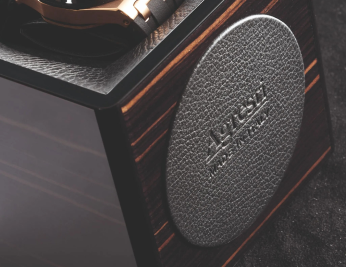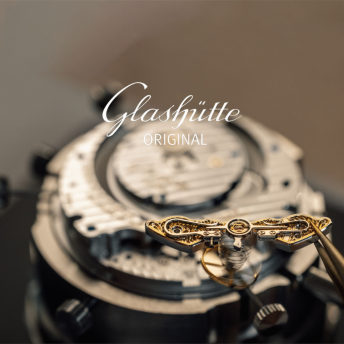De Bethune has always accustomed us to look at the celestial vault by scrutinizing the wrist, not just looking up. The “Starry sky” of the brand has always been an icon in the world of watchmaking, over time we have been able to follow its evolution: from the DB25 GMT Starry Varius, to the DB25T tourbillon dead seconds and to the DB28XP starry sky dial and other variations …
The sky has always been a point of reference for our sector and Denis Flageollet himself pays homage to him: “The cosmos, time, the sky… when you want to see time evolve and you have no tools, you look at the sky. This is one of the recurring themes in watchmaking “.

Many brands are rediscovering the celestial vault and the universe as a source of inspiration, some from a marketing point of view, some from a design point of view, some from a material point of view.
We must admit that for De Bethune it has always been a practical constant, as well as theoretical and philosophical, thanks to the titanium polishing technique that gives it a blue color via oxidation due to heat. From there, De Bethune never stopped. On the contrary, as they make themselves strong of their motto “do more, do better” sounding like master Yoda (Do or do not, there is no try), they went further by putting on the wrist of lucky collectors literal pieces of Space.
The first timepiece we are talking about is the Dream Watch 5, from 2016. One-of-a-kind piece at the time. The shape of the case is already reminiscent of a spaceship, moreover the material of this is a bluish meteorite. Being a non-homogeneous material in terms of structure, the colors of this case overwhelm us: blue, purple, red.

The DB28 Tourbillon with meteorite dial follows in 2017. Also in this case the watch stands out: DB28 case in Kind of Blue titanium and dial from space. Oxidized too, with a handful of white gold stars to leave no room for misunderstandings and give the usual homage to nature and the sky. The yield is also beautiful in this case, elegant but at the same time powerful. The energy that these materials conserve is truly from another planet.

I find this last statement that we have just shared beautiful and ironic: there are stars on a meteorite dial. It is curious if you think about it. There are stars on a large rock that wanders through space. Who put them there …? And how? One might say.
I smile thinking about what we know about meteorites. If I hadn’t written this article, little or nothing. I could have told you that they are rocks, perhaps pieces of exploded stars that roam the universe and that if they are too big we have to send Bruce Willis to blow them up otherwise they wipe out our planet.
The two clocks just described were decorated with a meteorite that landed in Argentina about 4000 years ago. The area of the finds was nicknamed Campo del Cielo. A meteorite weighing about 840,000 kg is thought to have exploded in contact with our atmosphere, scattering its fragments over that area of the earth’s surface. In the craters created, various finds can be found.
So let’s go back to our watches, and, complimenting those lucky guys who have them on their wrist, let’s think about a potential skit between two collectors:
-Are the rarest watches the ancient ones?
-It depends, different schools of thought… What watch do you have?
-The first Breguet wristwatch in history (for the record it is a watch that dates back to around 1810, which Breguet made for the Queen of Naples, Napoleon’s sister)
-Bravo, I have a De Bethune made with a meteorite that arrived on Earth about 4000 years ago.
Whose is the rarest watch?
Absolutely useless competition, let’s face it, but what value can we give to this watch? And what meaning can we give to this value?
Is it just a handcrafted timepiece? Made by an independent brand? Do we consider it functional art? Design object? Don’t look at us for an answer, we don’t have it. It’s a nice open ending like those movies that leave you hanging there, or the end of a season of a series. I hate them. We do not feel like stealing your opinion in this case.
But now we are going to go further. The De Bethune DB28XP gave its first “whimpers” in 2021 when we were in a pandemic. 10 pieces sold out in a few hours. Case in oxidized black zirconium, floating handle as always and dial in blued meteorite always with dusting of stars. We can notice something different.

In the first two objects we do not find geometries on the meteoritic part, or particular similarities, apart from perhaps some shades of color. In this case in the blue, painted in purple, we find stripes.
The De Bethune DB25 Tourbillon Aérolite
But now let’s get back to business. The newly presented DB25 Tourbillon Aérolite also has the same feature of the DB28XP Meteorite dial. Why? Because the meteorite of the first two watches has a different nature than that used for the last two timepieces presented.

In fact, the recovery area of this meteorite 2.0 is the Muniono River which is located between Finland and Sweden. For this reason, they call the meteorite in question Muonionalusta, dating back to about 1,000,000 years ago.
Discovering something more than meteorites we know that they can be divided into Rocky and Iron. In addition to Iron-Rocks… fantasy in power. Ferrous ones are better preserved, thanks to their more resistant nature. Rocks in contact with the atmosphere shatter and disintegrate easily, becoming dust.
The difference that we have previously described between the two quadrants concerns precisely this aspect. De Bethune used ferrous meteorites for the first two watches. On the contrary, the aerolite used for the new DB25 Starry Various Aérolite is rocky.

If the aforementioned million years were not enough, in the Muonionalusta researchers have found traces of stishovite, a very rare mineral that forms at very high pressures and temperatures. Analyzes estimate the birth of this material to be around 400,000,000 years ago. Unfortunately, there are no eyewitnesses and the brigade were busy, but it seems that there was a frontal between two asteroids and that a part of the metal core ended up inside the aerolith that reached the earth.
Try to review the first skit between Breguet, DB28T and DB25xp or DB25Aerolite.
400,000,000 years ago… I can’t even imagine them. I am already struggling to understand that the pandemic began a little over 2 years ago. How small are we in the universe?

We are always busy looking at our hamster wheel and running on it that we forget about the rest, that we are on a big blue ball that goes around in space. How important is our hour exactly? What value do we attribute to it? What value do we give to a fragment of the day? I like to think that when we look at our watch, meteor or not, we remember that we are in the world and savor that moment for us.

The DB25 Aerolite is produced with reduced capacity, 5 pcs per year. We cannot tell you exactly how many they will be able to do. The octahedral shape of the material favors an intriguing play of colors in which the eye ends up getting lost.
The hand-wound movement is equipped with the lightest 30 ‘tourbillon on the market, with only 0.18 grams of cage (the lightest piece of this one weighs 0.0001 grams) and the fascinating complication of dead seconds.

Final remarks
De Bethune’s journey is in its beginnings. We can’t wait to discover the news so we can tell you about them. Without going far Denis Flageollet has just given birth together with other brilliant minds a brilliant device, called Mecaverse. The construction of this object is estimated to be completed in 5 or more years.
The project will have at its center, in its heart, the solar system with more than 63 satellites, with their revolution around their respective planets, 8 total, a “double sympathy” as they say in these cases: a sense of harmony and interconnection . To keep his feet on the ground Denis says that he will want to insert the following complications: Date, solstice, equinox, equation of time, world time, sunset and sunrise, tides… We just have to wait 5 years after all…













